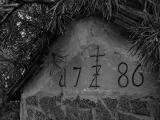Welcome to my Website! 🎉
Hej, I’m Christian Ege (he/him/his), and I’m currently working as Embedded Software Architect at ifm
I live in South Germany near the Lake of Constance with my Family and our puppy Elli.
I use this site as a method of blogging about my learnings, as well as sharing information about projects I do work on in my spare time.
I’m a GNU/Linux user by heart. When I am off the keyboard I like to travel, ride my bicycle and hangout with friends.




